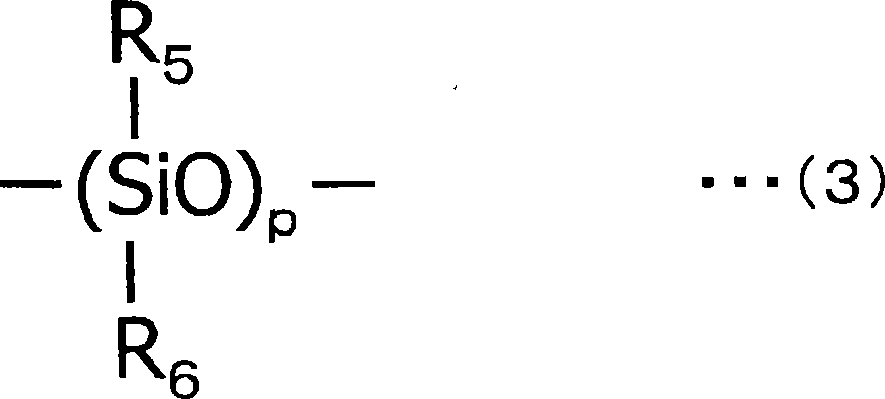Sheetlike products and interior finishing materials
A sheet-like and ultra-fine fiber technology, applied in the field of sheet-like objects, can solve the problems of deterioration of light resistance, uneven brushing grade, short brushing, etc., and achieve the effect of beautiful appearance and excellent durability.
- Summary
- Abstract
- Description
- Claims
- Application Information
AI Technical Summary
Problems solved by technology
Method used
Image
Examples
Embodiment 1
[0142] (Manufacture of nonwoven fabric)
[0143] Polystyrene was used as the sea component, polyethylene terephthalate was used as the island component, and an island-in-the-sea composite spinneret with 16 islands was used. The composite ratio is spun to form sea-island composite fibers, then stretched, crimped, and cut to obtain raw cotton for non-woven fabrics.
[0144]The obtained raw cotton is formed into a web using a cross-lapping machine, and is formed into a non-woven fabric through needle punching.
[0145] The nonwoven fabric made of this sea-island composite fiber was dipped in a 10% polyvinyl alcohol aqueous solution having a degree of saponification of 87%, and then dried. Then, polystyrene as a sea component was extracted and removed in trichloroethylene, and dried to obtain a nonwoven fabric composed of ultrafine fibers with a single fiber fineness of 0.1 dtex.
[0146] (manufacture of polyurethane)
[0147] 60 parts by weight of PNMOC and 40 parts by weight ...
Embodiment 2~4
[0152] Embodiment 2~4, comparative example 1~5
[0153] Production of polyurethane was carried out in the same manner as in Example 1, except that the composition and weight ratio of the polyols were changed to those shown in Table 1, respectively, and a napped leather-like sheet was produced.
[0154] Observation of the cross section in the thickness direction of the inside of the imitation leather sheet in Examples and Comparative Examples with a scanning electron microscope (SEM), as a result, polyurethane does not exist in the inside of the microfiber bundle substantially, but is located in the superfine fiber bundle. The outermost single fibers are partially bonded. Table 1 shows the composition and gelation point of the polyurethane in each example and comparative example, and the appearance quality, brush wear reduction, and durability of the obtained sheet.
[0155] Table 1
[0156] PU
Polyol Composition
() is the weight ratio
PU
Gelati...
Embodiment 5
[0160] (Manufacture of nonwoven fabric)
[0161] Polystyrene was used as the sea component, polyethylene terephthalate was used as the island component, and an island-in-the-sea composite spinneret with 16 islands was used, with 55% by weight of the sea component and 45% by weight of the island component. The composite ratio is spun to form sea-island composite fibers, then stretched, crimped, and cut to obtain raw cotton for non-woven fabrics.
[0162] The obtained raw cotton is formed into a web using a cross-lapping machine, and is formed into a non-woven fabric through needle punching.
[0163] The nonwoven fabric made of this sea-island composite fiber was dipped in a 10% polyvinyl alcohol aqueous solution having a degree of saponification of 87%, and then dried. Then, polystyrene as a sea component was extracted and removed in trichlorethylene, and dried to obtain a nonwoven fabric in which fiber bundles composed of ultrafine fibers with a single fiber fineness of 0.1 d...
PUM
 Login to View More
Login to View More Abstract
Description
Claims
Application Information
 Login to View More
Login to View More - Generate Ideas
- Intellectual Property
- Life Sciences
- Materials
- Tech Scout
- Unparalleled Data Quality
- Higher Quality Content
- 60% Fewer Hallucinations
Browse by: Latest US Patents, China's latest patents, Technical Efficacy Thesaurus, Application Domain, Technology Topic, Popular Technical Reports.
© 2025 PatSnap. All rights reserved.Legal|Privacy policy|Modern Slavery Act Transparency Statement|Sitemap|About US| Contact US: help@patsnap.com



